
This project is the result of a four-week assignment in an exhibit design class. The class was split into groups of two to four, and tasked with creating a museum exhibit. Our topic was Vertical Farming, which is a broad term that distills to stacking indoor farms atop one another in order to increase the output of a parcel of land.
The image above shows the three-story exhibit. In order to properly convey the feeling of a vertical farm, the exhibit shrank it's footprint and rose upwards.
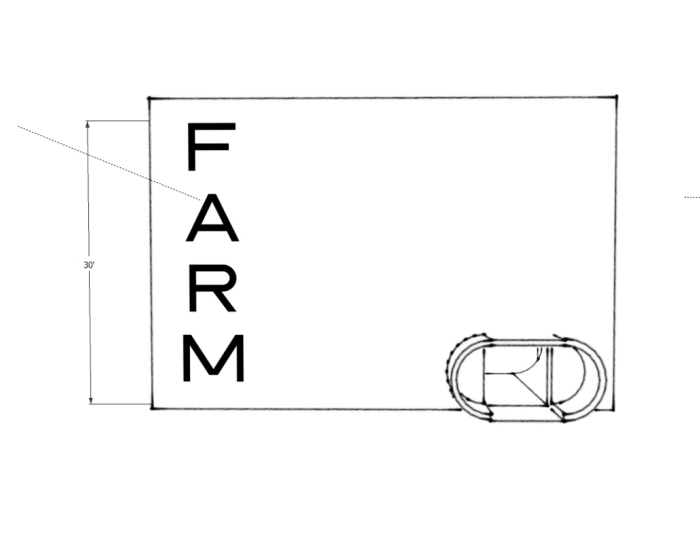
This image is what a museum goer first sees when entering the space. This exhibit would be housed in a large atrium or even out of doors.
The large text "FARM" on the left and the stark white wall challenge the viewer's concept of what a farm is and how it operates. The oblong shape in the right corner serves as an entrance.
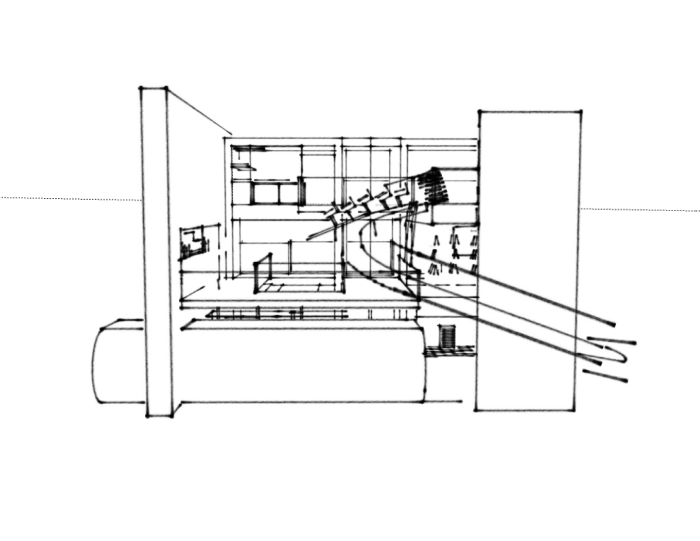
This side view captures the three levels of the exhibit. A capacious elevator with doors on either side and wide, circular pathways allow visitors to circulate through the space without having to backtrack.
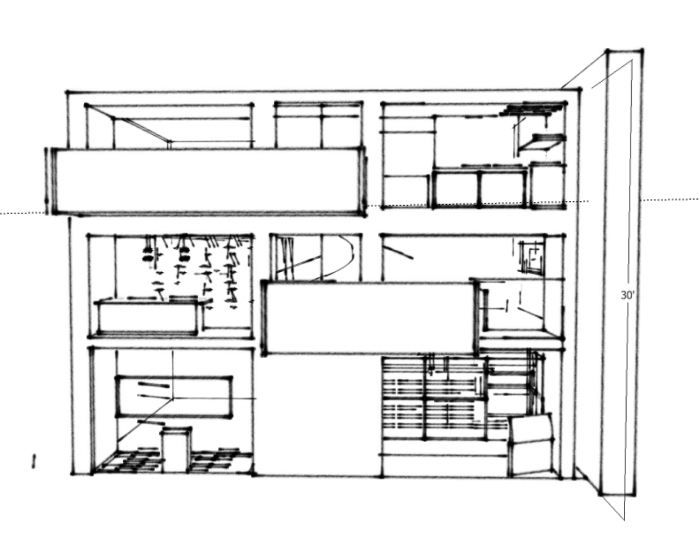
The other side of the exhibit. Glass walls allow visitors to see into the exhibit from outside. Two balconies allow guests to enter the elevator from the outside and allow the visitors to explore the structure from a different angle. The guardrails also serve as vertical plant-growing walls.
The central column is the elevator. The lower right 'box' is the exhibit's exit.
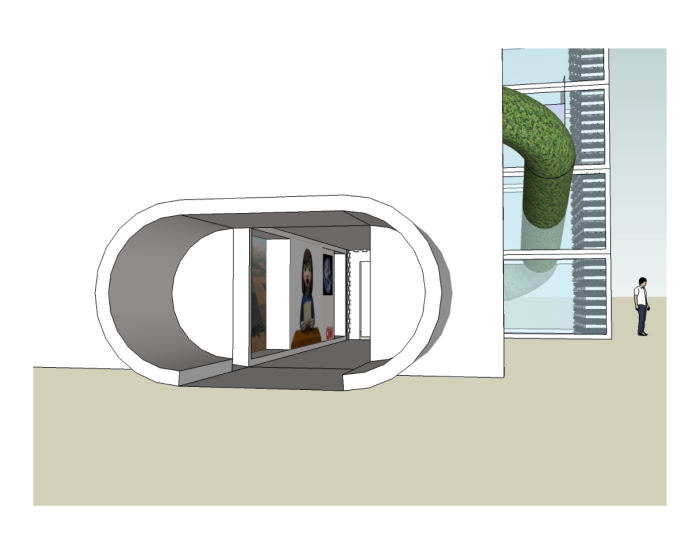
The exhibit entrance. Inside, a faux-news broadcast gives visitors a quick introduction to Vertical Farming.
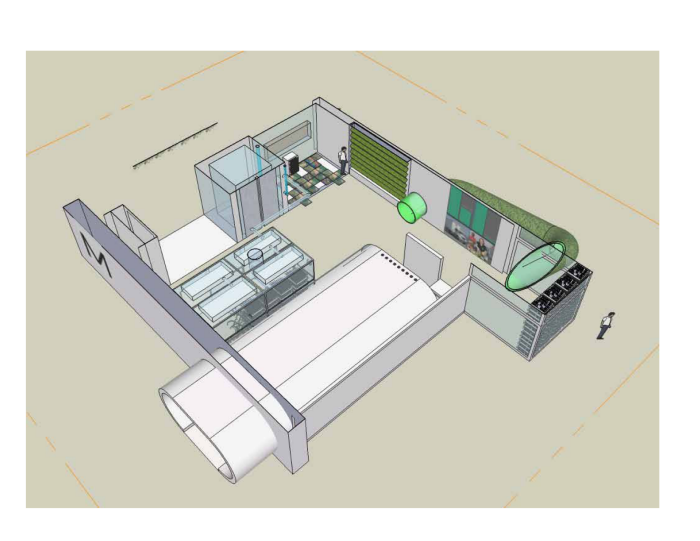
A section view of the first level. Here, there are a half-dozen exhibits, and plenty of gawking space.
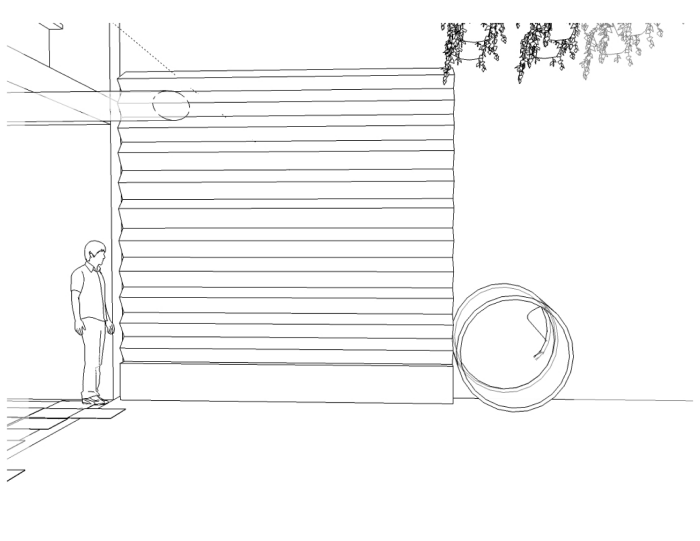
This exhibit serves as both a working farm and a learning experience. Entitled "The Germinator," this is where seeds for the farm are sprouted. The exhibit has space dedicated actually growing plants and producing food. The museum could staff volunteers or researchers who would conduct projects inside the space.
This exhibit would show a plant's life cycle. There is the possibility of visitors getting hands on and preparing seeds for germination.
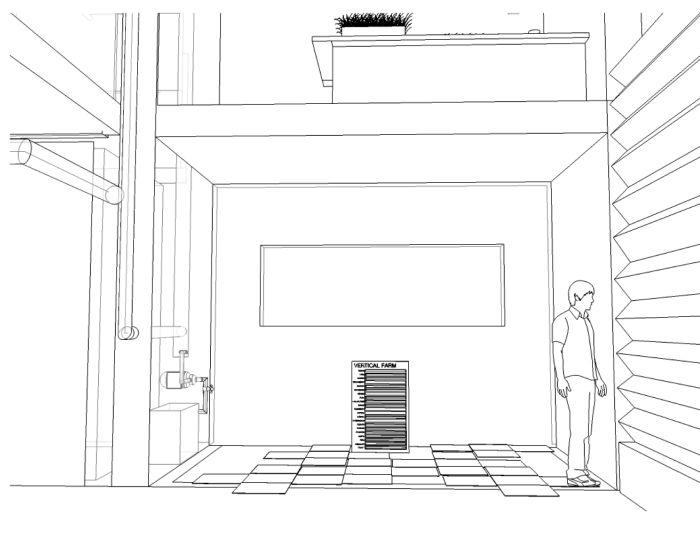
This exhibit is meant to show how a vertical farm can save space. A cabinet houses a number of tiles that can be removed and unfolded to become 500% larger than when stored. This represents the increased efficiency of vertical farms. A 30-story structure has the possibility of producing as much food as 150 acres of farmland.

A closeup of the acreage piece.
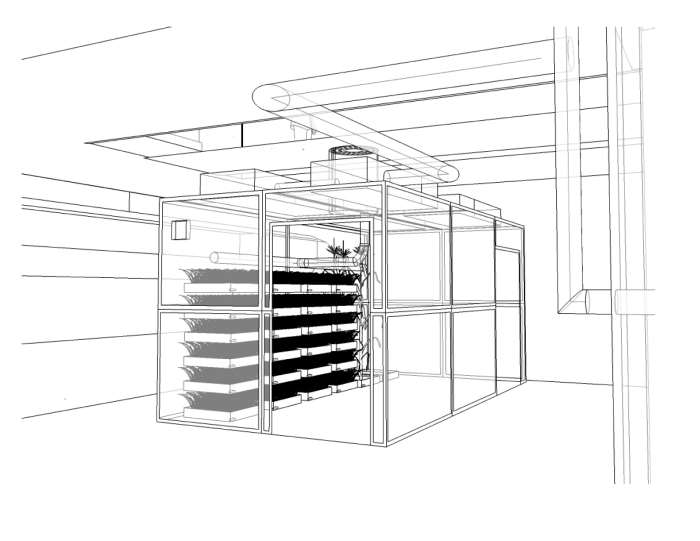
This piece is a small example of a working vertical farm. It is modeled after a greenhouse, and shows visitors that a variety of foods can be grown at once. It also teaches that waste-water can be used to feed the plants, which actually purifies grey-water into potable water!
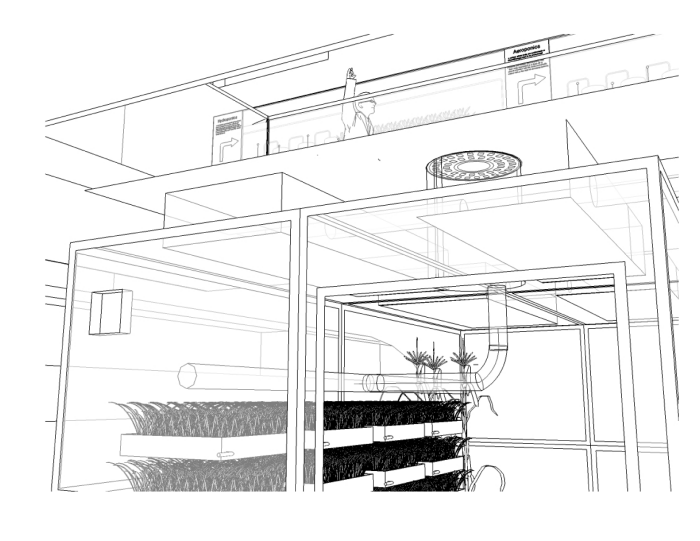
Above the micro-farm, a mock-city street shows waste-water coming through a manhole cover, through a translucent pipe and into the vertical farm. It is a sculptural interpretation of the process.
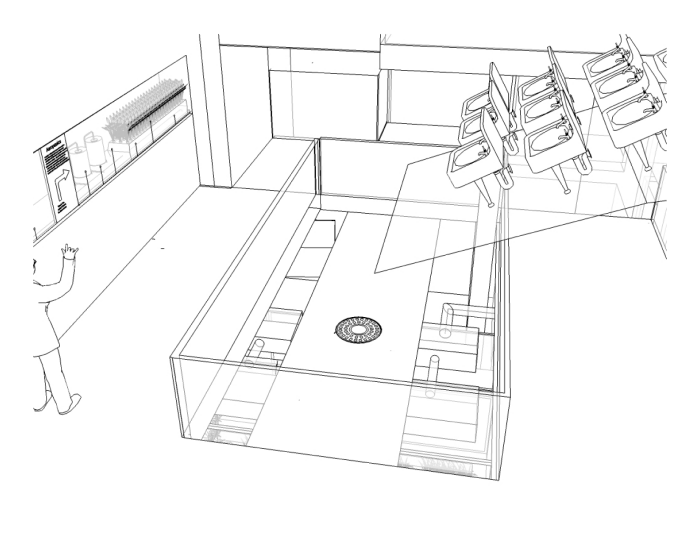
The mock street from above. A large sculptural piece hangs above. Water overflows from the sinks, creating a waterfall to the street below. Guests can control the flow of water from the third story.
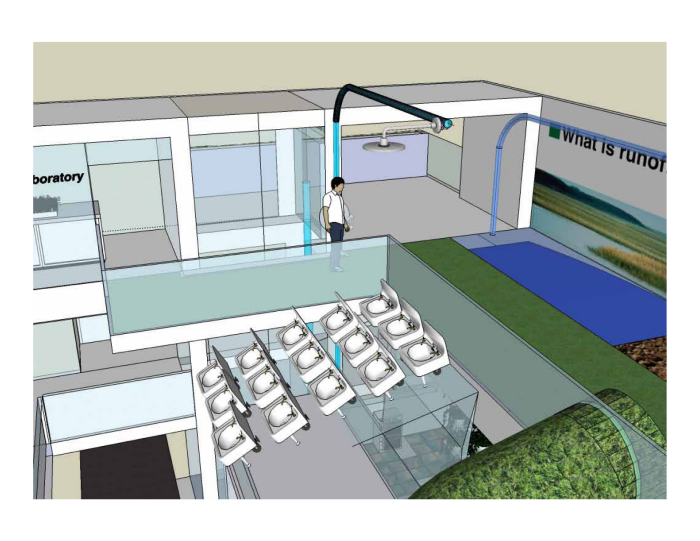
The third story of the waste water sculpture. A shower head is controlled by guests, showering sinks with water. The water runs down to the mock street below.
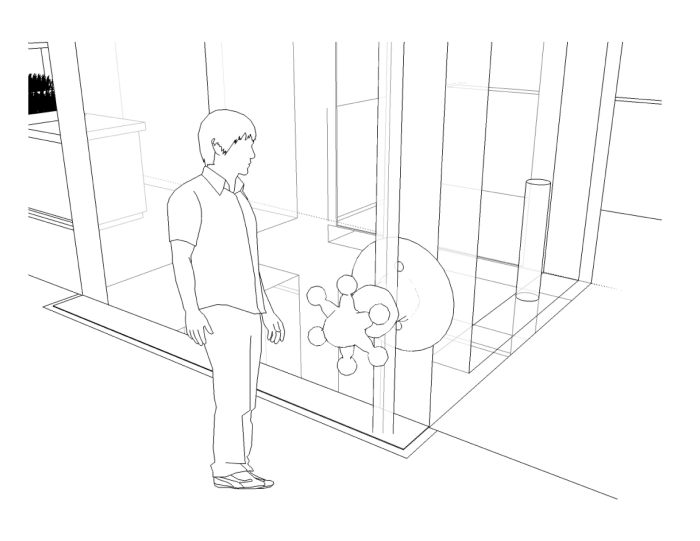
A detailed view of the water valve guests use to control the waste water sculpture. It is modeled after large industrial equipment.
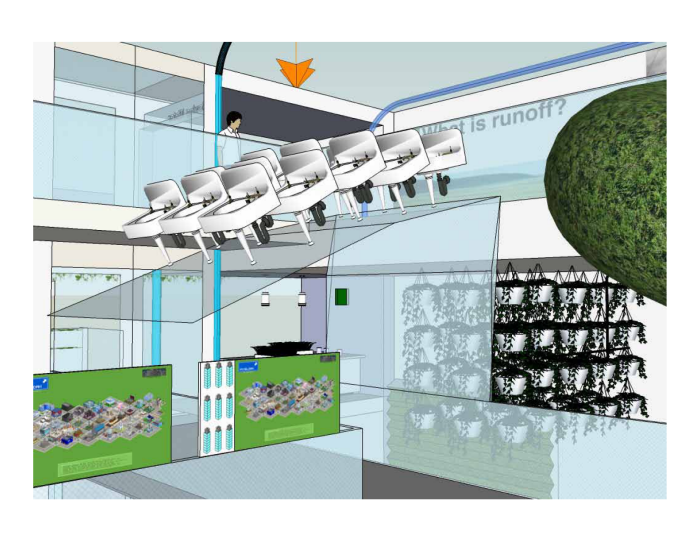
Another view of the waste water sculpture. The water from the shower head rains down onto the sinks, which overflow and run down the clear panel they are mounted to.
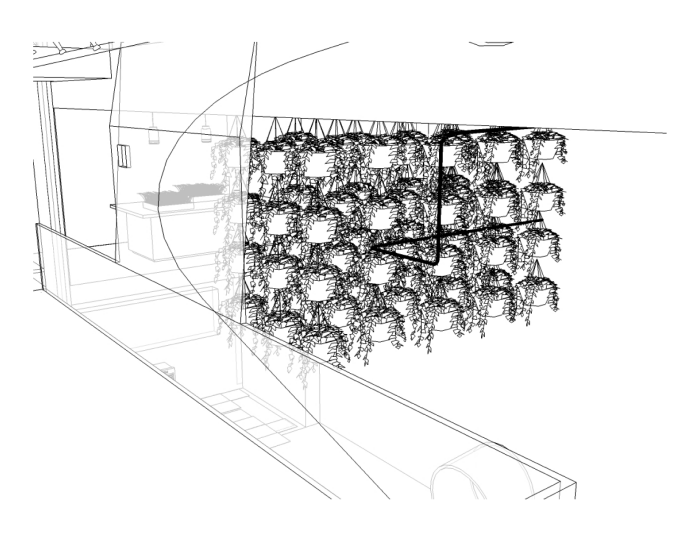
This display is an actual method of vertical farming. Real plants are suspended one below the other, to maximize horizontal footprint. This is a real technique agriculturists use.
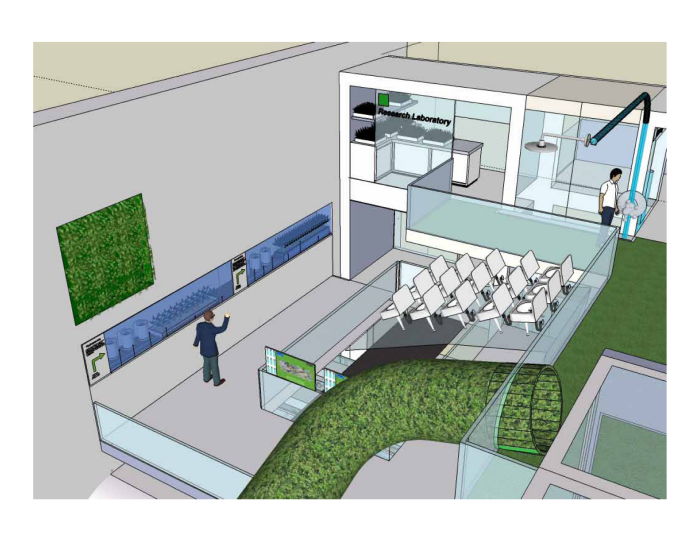
A view of the other half of the second story. On the left wall, there is a live wall containing actual plants, and some interactive displays. Upstairs, there is a real working research laboratory, for use by volunteers or researchers.
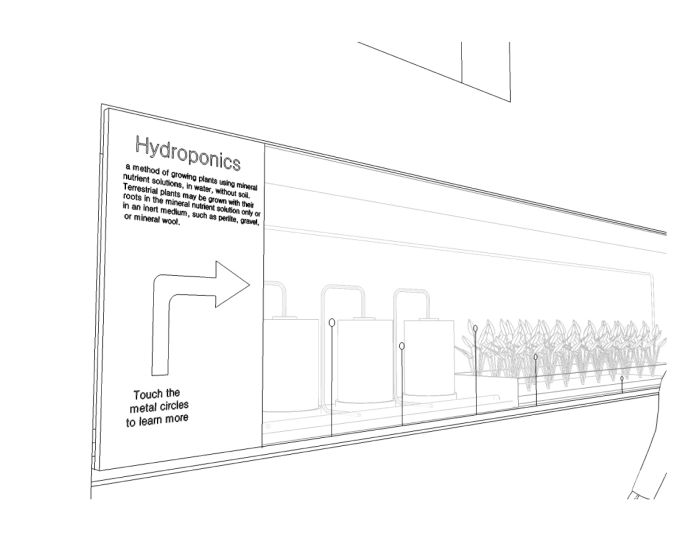
This interactive display moves and makes sound when a guest places his or her finger on a particular space. This display teaches guests about a common method of soil-less agriculture.

Outside perspective.
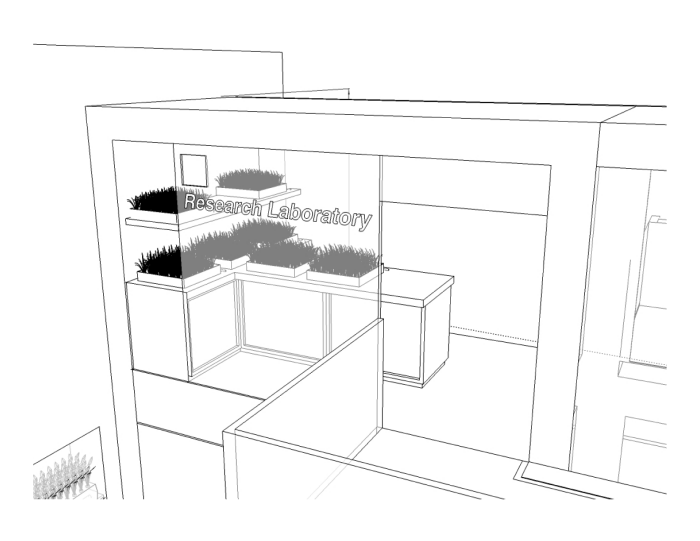
A view of the live research laboratory. Volunteers or researchers can use this space to experiment and teach guests about technology in agriculture.

An interactive display on the third story teaches guests about the environmental impact of farming, and how it affects us in our everyday lives.
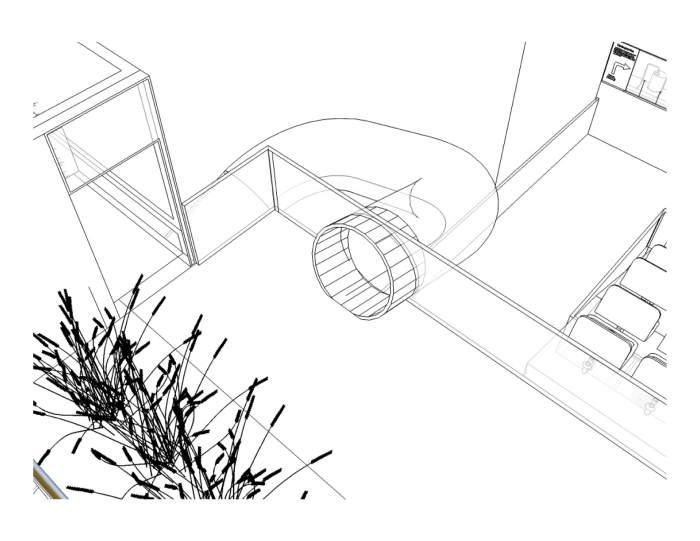
When guests reach the end of the third story, they are given the option of travelling down a large slide to the bottom!

From outside, guests can see a live vertical farm in action. The slide actually goes right through the space!

The slide exits on the first floor, right next to the germinator exhibit.

A view of the vertical farm from the first floor.

Outside perspective.

Outside perspective.

Outside perspective.

Thanks!
gLike